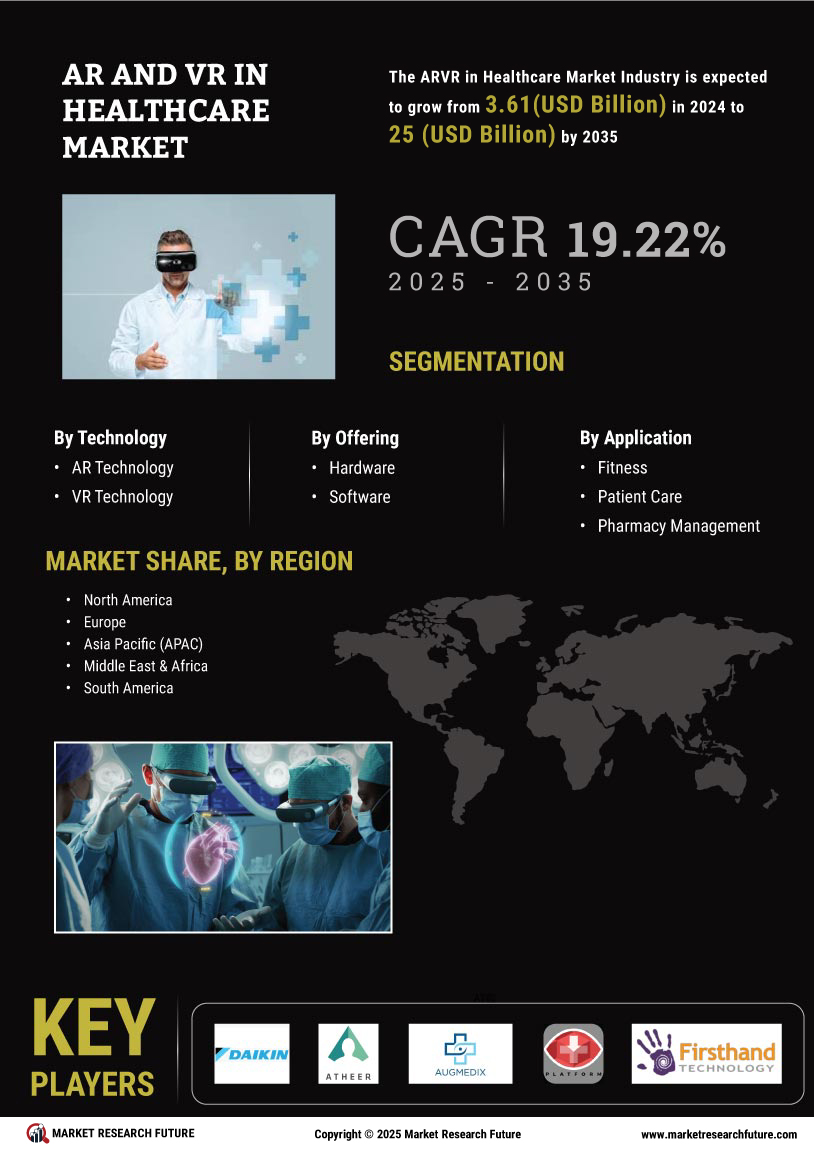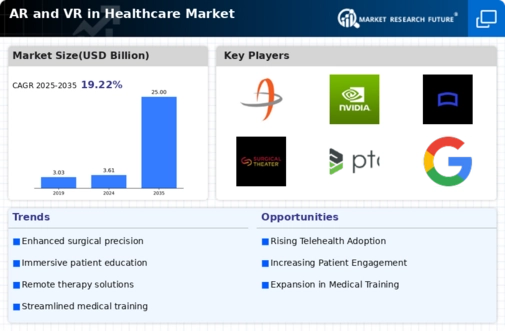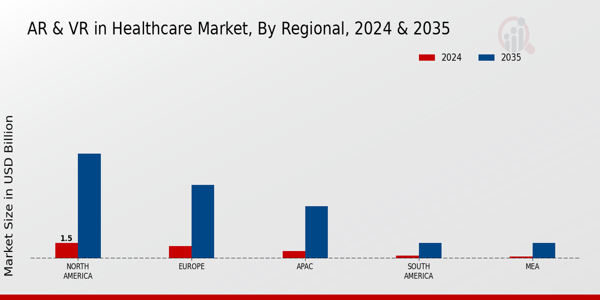Market Growth Projections
The Global AR and VR in Healthcare Market Industry is poised for substantial growth, with projections indicating a market size of 3.61 USD Billion in 2024 and an impressive increase to 25 USD Billion by 2035. This growth trajectory suggests a compound annual growth rate of 19.23% from 2025 to 2035, driven by factors such as technological advancements, increased adoption of telemedicine, and a focus on patient-centric care. These figures underscore the potential of AR and VR technologies to transform healthcare delivery and training.
Technological Advancements
The rapid evolution of technology plays a pivotal role in the Global AR and VR in Healthcare Market Industry. Innovations in hardware and software, such as improved headsets and more sophisticated software applications, enhance the user experience and expand the capabilities of AR and VR solutions. For instance, advancements in haptic feedback technology allow for more immersive simulations in surgical training. As a result, the market is projected to reach 3.61 USD Billion in 2024, with a significant portion of this growth attributed to technological enhancements that facilitate better training and patient care.
Increased Adoption of Telemedicine
The growing acceptance of telemedicine is a crucial driver for the Global AR and VR in Healthcare Market Industry. As healthcare providers increasingly utilize virtual consultations, AR and VR technologies are integrated to improve patient engagement and treatment outcomes. For example, AR can assist in remote surgeries by providing surgeons with real-time data overlays. This trend is expected to contribute to the market's expansion, with projections indicating a rise to 25 USD Billion by 2035, as healthcare systems worldwide embrace these technologies to enhance service delivery.
Growing Focus on Patient-Centric Care
The shift towards patient-centric care is reshaping the Global AR and VR in Healthcare Market Industry. Healthcare providers are increasingly prioritizing patient experiences and outcomes, leading to the adoption of AR and VR solutions that enhance patient engagement. For instance, VR can be used for pain management and anxiety reduction during medical procedures. This focus on improving patient experiences is likely to drive market growth, as healthcare systems seek innovative ways to meet the evolving expectations of patients.
Regulatory Support and Funding Initiatives
Government support and funding initiatives are vital drivers of the Global AR and VR in Healthcare Market Industry. Various health authorities are recognizing the potential of these technologies to improve healthcare delivery and are providing grants and incentives for research and development. This regulatory backing not only fosters innovation but also encourages healthcare organizations to invest in AR and VR solutions. As a result, the market is expected to flourish, with increasing investments from both public and private sectors.
Rising Demand for Enhanced Training Solutions
The need for effective training solutions in healthcare is a significant factor influencing the Global AR and VR in Healthcare Market Industry. Traditional training methods often lack the immersive experience necessary for complex procedures. AR and VR provide realistic simulations that allow medical professionals to practice in a risk-free environment. This demand is reflected in the anticipated compound annual growth rate of 19.23% from 2025 to 2035, as institutions recognize the value of these technologies in improving clinical skills and knowledge retention.














